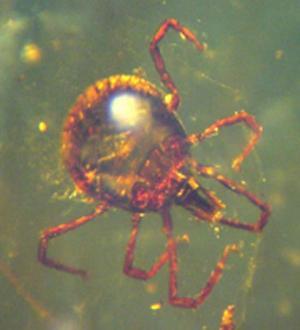LIVERMORE, Calif. -- U.S. troops blew up enemy bridges with explosives in World War II to slow the advance of supplies or enemy forces.
In modern times, patrollers use explosives at ski resorts to purposely create avalanches so the runs are safer when skiers arrive.
Other than creating the desired effect (a destroyed bridge or avalanche), the users didn't exactly know the microscopic details and extreme states of matter found within a detonating high explosive.
In fact, most scientists don't know what happens either.
Scientists have developed a machine which is capable of reading our mind and revealing our most private thoughts.
American researchers from Carnegie Mellon University in Pittsburgh, found that, with the aid of a sophisticated scanner and computer programme, they were able to determine how the brain lights up when thinking about different subjects.
What part of you is only 1% to 3% of your body's mass, yet uses 20% of all the oxygen you breathe? Your brain! Here are ten more brain facts:
- Your brain needs a continuous supply of oxygen. A 10 minute loss of oxygen will usually cause significant neural damage. Cold can lengthen this time, which is why cold-water drowning victims have been revived after as much as 40 minutes - without brain damage.
- Your brain uses a fifth of all your blood. It needs it to keep up with the heavy metabolic demands of its neurons. It needs not only the glucose that is delivered, but of course, the oxygen.
- Your brain feels no pain. There are no nerves that register pain within the brain itself. Because of this, neurosurgeons can probe the brain while a patient is conscious (what fun!). By doing this, they can use feedback from the patient to identify important regions, such as those used for speech, or visualization.
LIVERMORE, Calif. -- Samples of the material picked up during the NASA Stardust mission indicate that parts of the comet Wild 2 actually formed in an area close to the sun.
Washington: An asteroid that has a one in 20 chance of striking Mars on January 30, might just fly past, which would probably make it target Earth at some point in future.
Comment: From the information available, it is evident that we are not prepared nor have the knowledge on how to divert such a thread. It was only this last year that the mainstream media began even talking about the possibility of a strike. Nope, no matter how reassuring the last sentence of the article, it just ain't true folks!
Four years ago, NASA's Stardust spacecraft chased down a comet and collected grains of dust blowing off its nucleus. When the spacecraft Comet Wild-2 returned, comet dust was shipped to scientists all over the world, including University of Minnesota physics professor Bob Pepin. After testing helium and neon trapped in the dust specks, Pepin and his colleagues report that while the comet formed in the icy fringes of the solar system, the dust appears to have been born close to the infant sun and bombarded by intense radiation from these and other gases before being flung out beyond Neptune and trapped in the comet. The research appears in the Jan. 4 issue of the journal Science.
Mammoth fossils around the Yukon are offering evidence that ancient meteor explosions may have wiped out entire species there thousands of years ago, a California-based researcher says.
A team led by Richard Firestone, a nuclear scientist at the Lawrence Berkeley National Laboratory in Berkeley, Calif., made the discovery while testing thousands of samples of fossilized Alaskan mammoth ivory from a suspected meteor impact that occurred about 13,000 years ago.
Berkeley -- The longest-running search for radio signals from alien civilizations is getting a burst of new data from an upgraded Arecibo telescope, which means the SETI@home project needs more desktop computers to help crunch the data.
A team of astronomers has discovered a cosmic explosion that seems to have come from the middle of nowhere - thousands of light-years from the nearest galaxy-sized collection of stars, gas, and dust. This "shot in the dark" is surprising because the type of explosion, a long-duration gamma-ray burst (GRB), is thought to be powered by the death of a massive star.

Comment: From the information available, it is evident that we are not prepared nor have the knowledge on how to divert such a thread. It was only this last year that the mainstream media began even talking about the possibility of a strike. Nope, no matter how reassuring the last sentence of the article, it just ain't true folks!